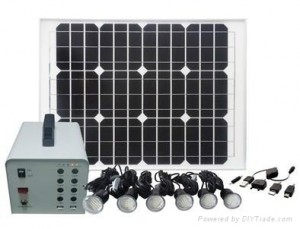Solar Lighting Tips During Late Fall and Winter
 Throughout rapid times of fall and winter, photo voltaic lights get less sun just when darkness means they have to remain on longer each evening.
Throughout rapid times of fall and winter, photo voltaic lights get less sun just when darkness means they have to remain on longer each evening.
Unlike what electrical landscape lights retailers say, it is simply not the case that photo voltaic lighting is only good at the summer time.
While photo voltaic lights might not be as vibrant or remain on when there less hrs of sunlight, the sun’s rays does not increase its rates throughout winter as fuel costs rise and demand increases.
And, you will find fast and simple steps you can take for the greatest performance from photo voltaic lighting within the fall, winter, and springtime.
Photo voltaic technology is constantly on the evolve quickly, a well known fact by itself which should silence experts and set misconceptions aside. Changing Brought and photo voltaic technology mean the standard and toughness for photo voltaic lights continuously enhances.
Winter frequently happens when you undoubtedly can get your hard earned money from greater listed lights, which often use better lights and photo voltaic technology, in addition to higher quality housing, circuitry, and lightweight color.
Adjust Sections or Photo voltaic Light Positions Seasonally
Many photo voltaic lights have adjustable sections that allow you to tilt these to absorb probably the most solar power.
An over-all rule for adjustable sections would be to put them “flat” within the summer time, moved in a 45 degree position for the sun throughout spring and summer time, and also to a 60 degree position toward s the sun’s rays within the dead of winter.
Even when your cell can not be modified, don’t be concerned about this. Most photo voltaic fittings work all right with less than five to six hrs of sun each day.
More recent photo voltaic lamps generally have sections on all sides (excluding attached to the wall lamps) so these generally are okay how they are.
For those who have keep accent or path lights out year-round, tilt them a little therefore the sections improve exposure to the sun. The trade-from getting path stakes that are not perfectly straight might mean a few more hrs of sunshine output each evening.
Keep Leaves off Solar Power Panels and Lighting Fittings
It’s wise to regularly check solar power panels year-round to make certain grime, pollen or leaves don’t block the sun’s rays. It is really important once fall comes around.
Even though many foliage is lengthy passed by Thanksgiving, many trees (particularly trees) often shed some leaves within the fall after which shed continuously before the spring when new leaves begin to emerge.
Together with solar power panels, make certain you frequently look into the light itself to make certain that leaves aren’t obstructing the sunshine fixture or its panes.
For photo voltaic shed lights and security photo voltaic lights, this might mean checking roofs of small structures or sections installed on walls or trees. The simplest method to obvious these off is by using an outdoor hose, presuming it isn’t so cold the water is turn off for that winter.
Brooms are also effective, as lengthy as you are careful to not strike hard part from the panel, that could crack it. Caution ought to be combined with leaf blowers, particularly if acorns, damaged branches or twigs are nearby that may strike and damage the cell or fixture.
Important note: Many photo voltaic floodlights use halogen lights rather than LEDS, largely because lots of people like the warner colour of halogen lights within the cooler tone of older LEDs. However, halogen lights generate large numbers of warmth.
Pay special focus on halogen fittings, photo voltaic or else as dry leaves or twigs on halogen lights can cause a fireplace hazard, particular whenever a fixture is mounted to some structure. This really is one good reason why we are really not a large fan of halogens, outdoors or inside.
Strategies for Winter Snow and ice
Unless of course snow is extremely deep, most lights and solar power panels may be easily taken clean having a soft broom. Avoid using a shovel, while you could damage the sunshine and/or even the cell.
Ice is really a different matter. Never nick at ice, because this is prone to cause harm. Hold back until character touches it away or pour warm water within the ice and brush away what you could. Obvious ice will not impact the cell from absorbing much energy anyway.
If snow, ice or a combination of the 2 covers an easy for over a couple of days, you may want to turn the sunshine off for 2 sunshine, after which turn it well on.
This allows the photo voltaic battery customize the strong charge, jump-beginning its performance. Batteries included in snow 5 days to some week or even more tend to be just like a battery inside a vehicle that has not been driven shortly. Within the worst situation, the vehicle will require jumper cables frequently it might simply need to idle some time before it hits the street.
Despite these pointers, it’s impractical to anticipate your photo voltaic lights to become as vibrant or shine as lengthy in the winter months because they do throughout the late spring or summer time. However, the sun’s rays does not ask you for more come winter season due to the availability demands of houses throughout winter mean more “peak hour” electrical rates.